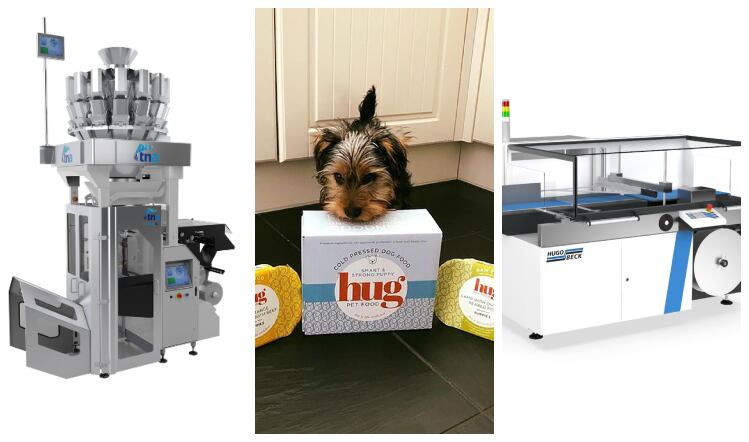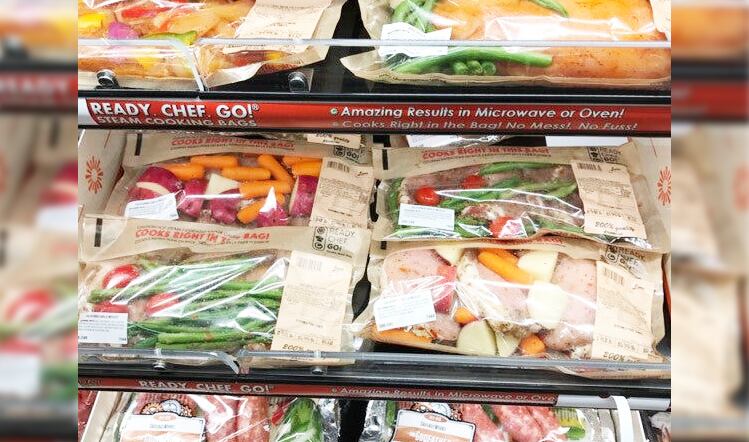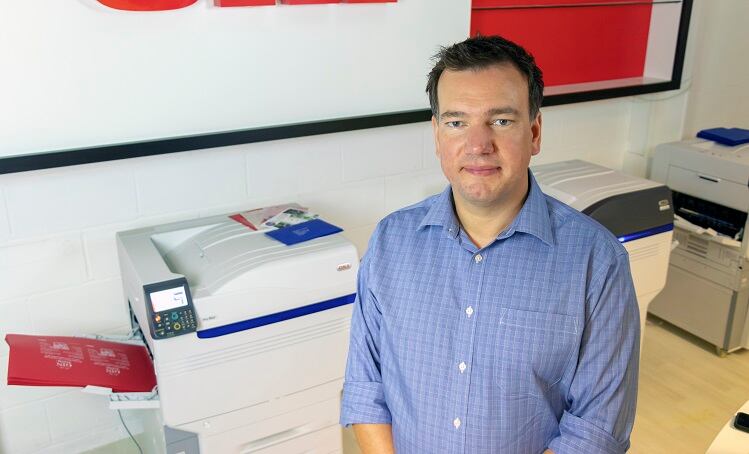Packaging is going ‘green’ - and has been heading that way for a long time. Be it calls for manufacturers to watch their carbon footprint or consumers demanding their food packaging is more recyclable, the pressure to confirm with this growing trend is high.
But not every machine in the packing hall can handle these greener materials – you can’t just throw a paperboard pot in a machine meant for plastic punnets and expect the same results.
As Torsten Giese, marketing manager at Ishida, points out, there is no ‘one-size fits all’ sustainable packaging solution and there are many different criteria to consider.
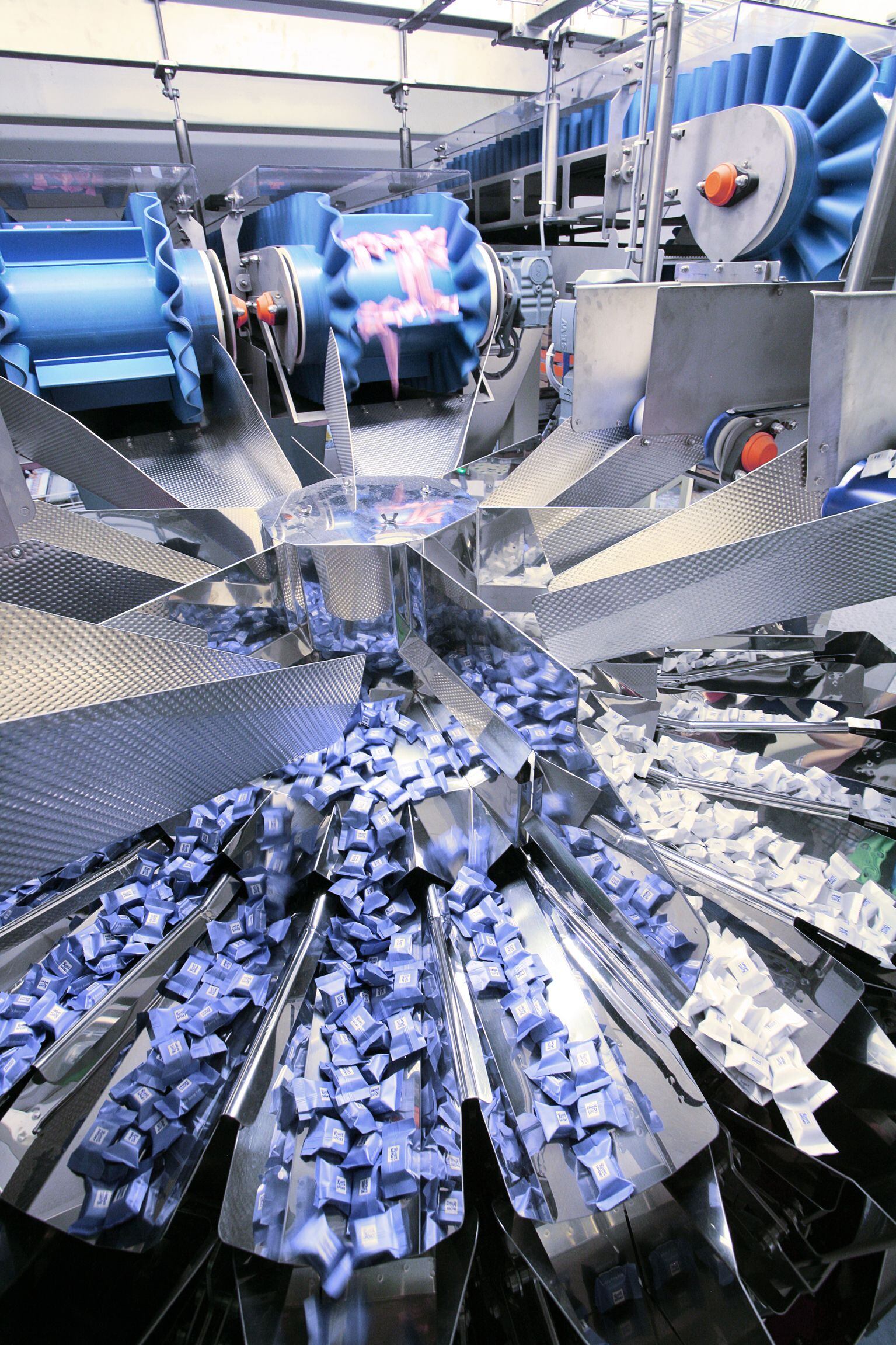
A key sustainable consideration for the food sector is the need to minimise unnecessary waste, a need that is being met by new pack styles that reduce the amount of materials used while also incorporating more recycled content – developments in films within vertical form, fill and seal machines have also seen this shift.
With this in mind, Ishida has developed its equipment to meet the needs of these new materials and formats.
“Our latest tray sealer, for example, offers a variety of consistently high-quality sealing options – seal only, gas flushing, MAP and skinpack – across a wide variety of tray designs and materials, including plastic, board, and recyclable and innovative paper film formats to support the use of sustainable packaging,” Giese explained.
“Our new Inspira Box Motion bagmaker meanwhile, can operate in both continuous and intermittent motion modes. This enables it to handle the widest variety of both product and pack formats, including the introduction of recyclable film and paper packs, while maintaining excellent seal quality and integrity.”
Packaging machinery also plays a vital role in preventing waste caused by unnecessary recalls – if a pack is not sealed properly, it can lead to food deteriorating before it reaches the retail shelf. Contaminants in the pack will lead to food being rejected by the consumer. In the worst-case scenarios, such problems could result in a complete product recall.
“Food spoilage is also not the only quality issue when it comes to waste,” Giese continued. “A pack with missing items, for example five biscuits where there ought to be six, may be returned by the consumer.
“Packs containing deformed product, such as a beef burger that has not been shaped properly, also run the risk of being rejected. Inconsistencies in a pack – being underweight or not containing the ingredients in the ratio expected – can similarly lead to complaints and returns.
“Investing in the appropriate packaging equipment is therefore critical, both to prevent these problems from occurring in the first place and to minimise their impact if they do.”
Handling multiple formats
For food manufacturers, it is essential that any new pack formats remain functional and fit-for-purpose and do not compromise on protection or shelf-life while delivering sustainability benefits. Equally important is that these new formats can be handled as effectively as before on their tray sealing machines.
Proseal UK key accounts manager, Daryl Henshaw, said: “To meet these requirements, we continue to work closely with our customers and tray and film suppliers to stay ahead of the demand from legislators, retailers and consumers for environmentally friendly packaging.
“As the move towards alternative materials to plastic has continued to gather pace, we have worked closely with many manufacturers, such as Halopack, Huhtamaki, and RAP to ensure that any plastic alternative solution is still capable of being quickly and effectively sealed on our machines.”
Proseal’s solution has been to make sure its machines can adapt to multiple formats to allow packers to switch more easily with no modifications and without additional and costly investment. Manufacturers can ‘plug-and-play’ these different materials into their existing Proseal machines.
“Another way in which to reduce the environmental impact of any packaging is through a reduction in material usage,” Henshaw continued. “The adoption of top sealing instead of clamshell and clip-on lids in the soft fruit sector, for example, reduces packaging materials by as much as 45%.
“This equates to a saving of 10 tonnes of plastic for every one million trays that are top sealed. Similarly, we can assist tray manufacturers in the development of lighter weight trays that still have the strength and robustness to produce tight, high-quality seals in our tray sealers.”
Labour shortages
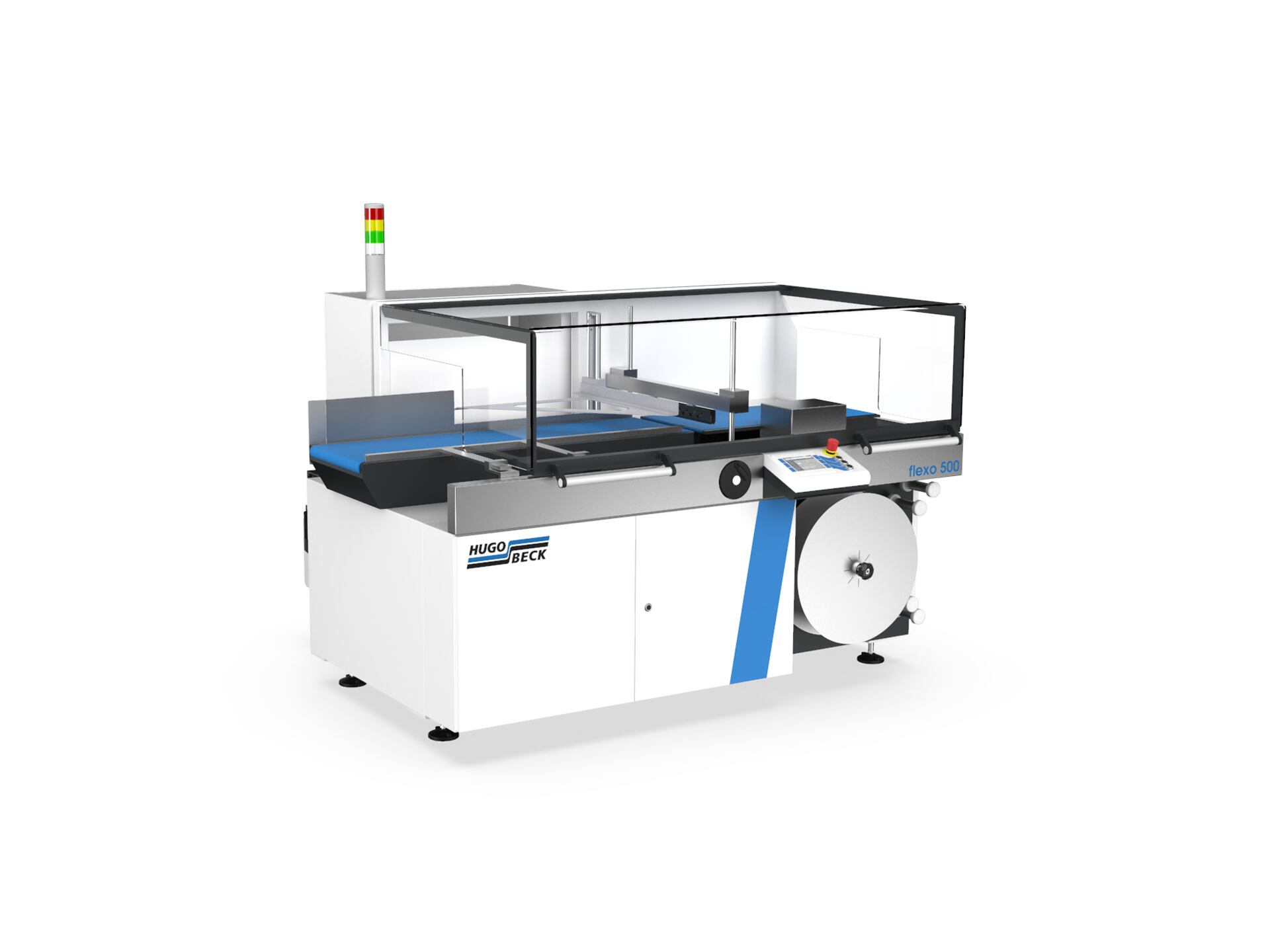
While the need avoid waste has been a key driver in packaging machinery development, one issue that continues to hamper food and drink businesses is the access to labour – both skilled and unskilled.
Hugo Beck managing director ,Timo Kollmann, argued that automation could help counter staff and skills shortages, not the mention further challenges of rising energy costs, trade restrictions and supply chain delays.
“This is why packaging machinery providers like Hugo Beck are helping safeguard food businesses by automating their packaging lines and reducing downtime,” he explained.
“Standard solutions are often insufficient to meet the demands of the fast-paced, sustainably inclined sector. Processing speed, automation and tracking options must therefore also be considered when assessing the suitability of a packaging system and developing a tailored approach is often the best option.”
Kollmann offered Hugo Beck’s flexo 500 as a prime example of the desired flexibility packaging machinery needs to have in order to keep up with the ever changing demands of manufacturers – a flexible all-rounder capable of handling multiple food applications.
High efficiency is achieved thanks to ‘fast and simple’ film exchange, with the machine capable of processing the diverse film thickness and film. In addition, these machines offer maximum serviceability and maintainability with numerous maintenance-free components and user-friendly access, eliminating costly operational downtime.
Kollmann added: “Flexibility is no longer a luxury but a necessity in the packaging industry, and so machines need to be able to process a variety of materials, reduce wastage and energy, all whilst maintaining high functionality and efficiency.
“Choosing automated machine equipment which can be easily modified ensures that manufacturers can switch between packaging options freely and continue to meet the ever-changing industry regulations and consumer trends, whilst mitigating the impacts of labour constraints.”
As labour shortages continue to be a major issue across the food and drink industry, manufacturers need to look for every opportunity they can to boost efficiencies to make up for the lack of hired hands on the shop floor.
Processing and packaging machinery supplier TNA designed its latest pair of systems – the Robag 3e and auto-splice 3 – with this in mind, focusing on how to make them simpler to service to reduce downtime and the need for multiple skilled engineers on site.
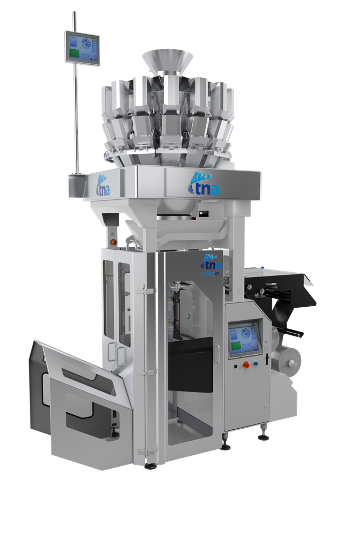
Outside of advances that allow the systems to communicate with existing lines with relative ease, this latest Robag is said to reduce cabling infrastructure by 20%, enabling easier servicing and lower total installed costs.
The TNA Robag 3e also shares common core components with the TNA Roflo distribution conveyors and the TNA intelli-flav seasoning system, lowering the need for additional spare parts stocking, while its smart diagnostics and remote connectivity allow real-time communication for faster global servicing support.
“As well as providing the opportunity to switch quickly and easily between pack sizes, it delivers maximum production and energy savings for the same power and resources,” said a TNA spokesman. “The system’s superior design results in product waste levels as low as 0.1%, offering a more efficient, sustainable packaging operation.
“Designed for seamless cohesion with the Robag 3e, the auto-splice 3 is a unique, compact solution that splices packaging film automatically, with no downtime or interruption to the packaging process. The new and unique rotary reel swapping feature makes it easier to access and replace the film roll without having to stop the packaging system, helping manufacturers maximise throughput and achieve faster, smoother film changeovers.”
Labelling on the fly
When it comes to new product development, as well as the need to reformulate products to meet constantly evolving industry standards, manufacturers will often be forced to rapidly change the recipes of the food they produce. But in a world where printing the wrong ingredients on a label can lead to costly recalls, innovative producers need to have the ability to adapt packaging to reflect these changes.

One such producer, premium pet food brand Hug Pet Food, was faced with this problem when looking for a packaging solution. The recipes behind its dog and cat food are constantly changing and they needed the labels to be able to adapt to that. What’s more, it needed packaging that not only met its sustainability needs, but also its gourmet image.
Packaging and machinery supplier Colpac’s solution was to work smarter, not harder – since the selected 750ml and 1000ml Stagione pots had the same sized top, only one size tool for sealing the products was required. The ColSeal SL1200 was the machine of choice for Hug, featuring adjustable tooling – should the need require – and integrated functionality, including an inkjet coding printer and a conveyor unit.
The result both met the premium pet food producer’s high quality and sustainable objectives, while responding to demands for flexibility, catering to the evolving ingredients of the company’s product range.
Against a landscape of ever changing regulations and shifting consumer preferences, packaging machinery needs to be just as adaptable as the rest of the food and drink industry. For every regulation forcing manufacturers to reformulate their products there will be an innovation in packaging technology that will require new packaging methods to compensate for it.
One size won’t fit all and manufacturers will need to be ready to change how their products are packed at a moment’s notice and the providers seem well in hand to offer that support.
Automation and robotics
Patricia Torres, industry marketing manager for Food and Commodities at Omron Europe, discusses how packaging machinery is adapting to better cope with more sustainable packaging materials.
Using less or thinner materials that could also have an increased recycled content in them is a good starting point for manufacturers in their journey to sustainable packaging especially given the latest UK Packaging Tax regulations.

But here is the challenge: today’s packaging machinery has not been designed to take on those challenges or to even make efficient use of energy, especially when changing to different recyclable materials. That implies a shift towards a more holistic approach to sustainability in machinery that automation and robotics technology tackles in four areas:
- Flexibility: Machines need to be flexible enough to work with different alternative packaging materials with minimal or no changeover time and operator intervention. For that, integrating automation and robotics control is key.
- Waste: food manufacturers need to eliminate or prevent quality errors that could lead to waste when handling those materials to form, fill and seal a package and at the same time, make sure they can deal with the newest labelling and traceability requirements for circularity. That means they need to incorporate the latest technologies for product, package plus labelling detection and inspection.
- Energy: Using just the right amount of energy and using it more efficiently along the whole process is something taken for granted, but often it is not carefully checked. Automated energy monitoring and energy efficient solutions guarantee the best possible use of it in energy-intensive tasks like linear and rotary motion, or even reducing the use of fossil fuels when moving items around the factory floor with autonomous mobile robots.
- Productivity: Last but not least, machines need to do all of the above without impacting on productivity. Optimising production and achieving a truly smart maintenance process is something that without data collection and analysis enabled by automation and robotics is almost impossible.
Working with reduced weight packaging and more sustainable materials, are key ways of supporting sustainable packaging. Handling and tracing these materials properly, will also help to reduce the amount of waste produced not only in production but also along the value chain. And if in doing so, the packaging machine is optimised to use only the necessary energy to achieve the same quality and is prepared to cope with the newest traceability strategies for circularity, the better.
Manufacturers need a great set of machine feature in order to support their sustainability goals. Keeping that in mind, there are two alternatives: Either, they could buy new redesigned machines/lines that should come with the latest automation technologies supporting sustainability goals (at a cost) or make the most out of the ones installed. Cost wise, and with a difficult economy ahead, my advice would be, go for the latter. And here the automation partners are key to help achieve this.


